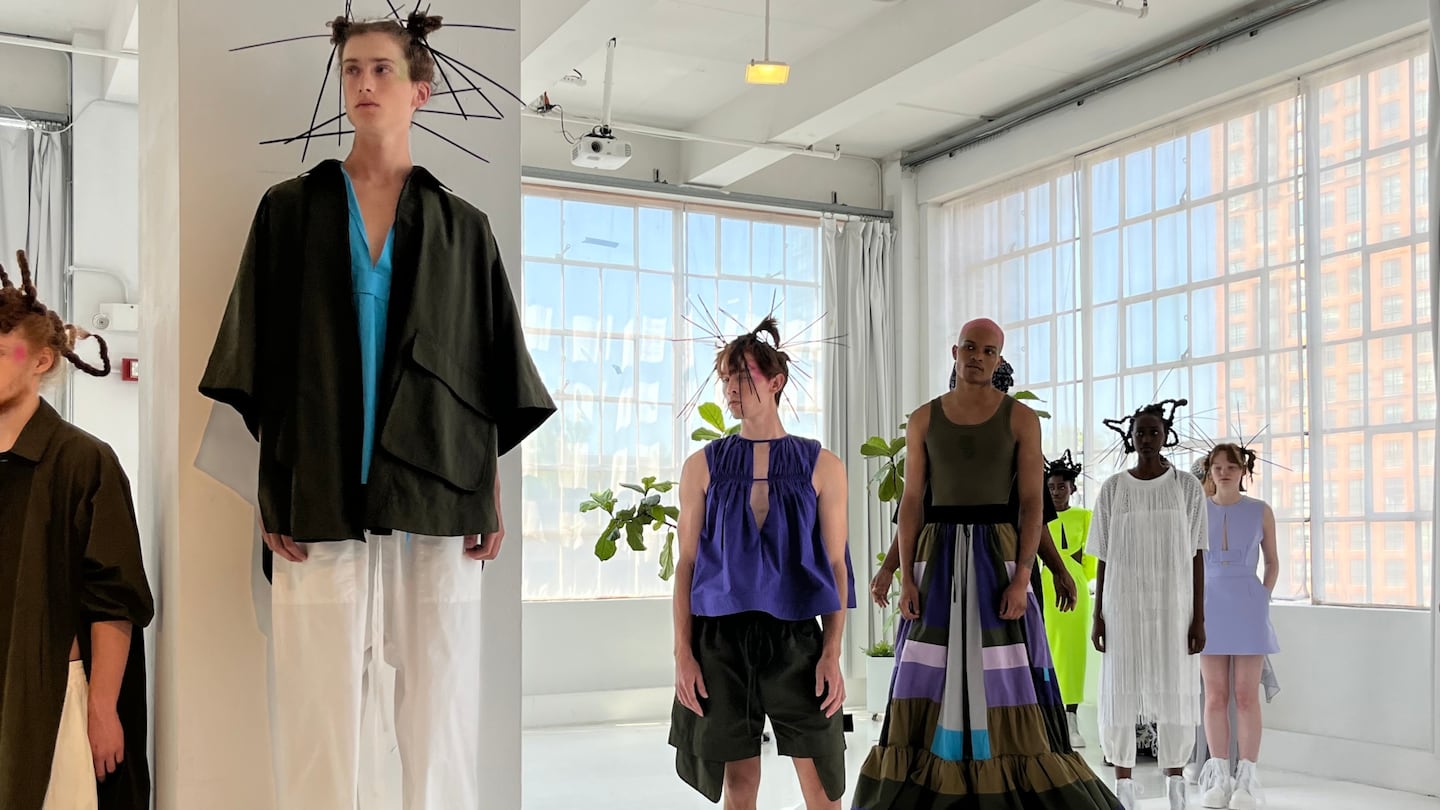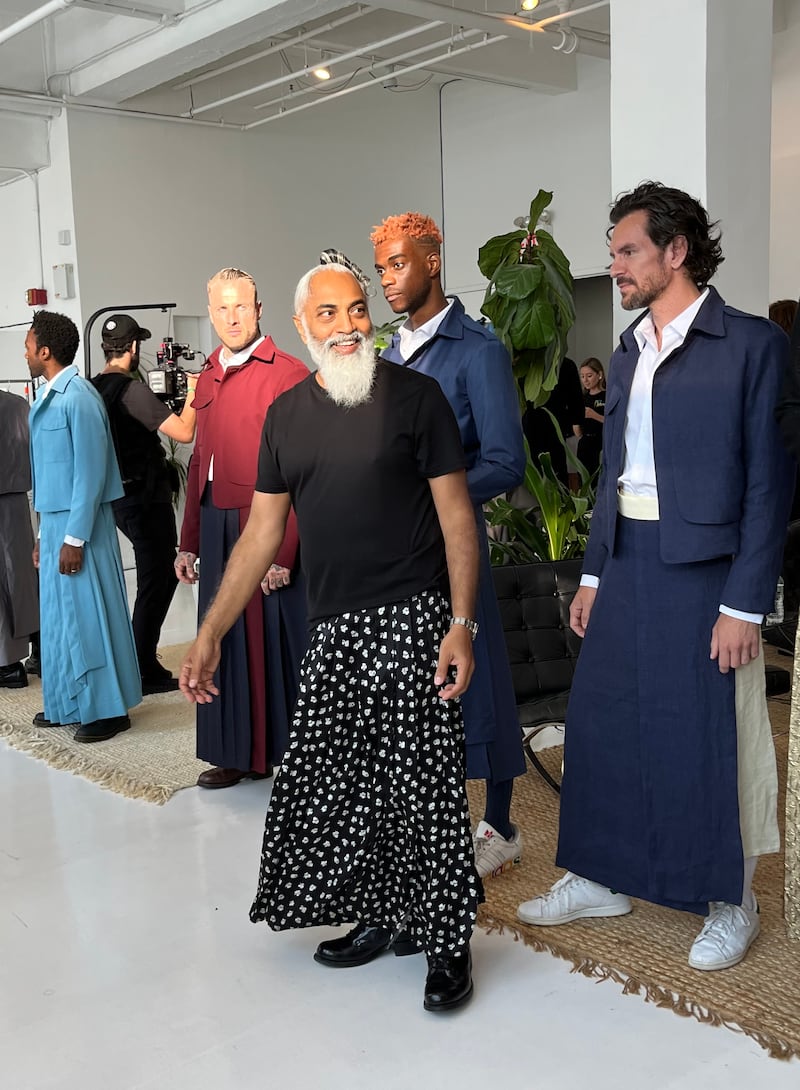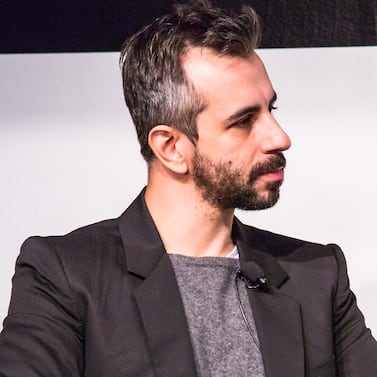
The Business of Fashion
Agenda-setting intelligence, analysis and advice for the global fashion community.

Agenda-setting intelligence, analysis and advice for the global fashion community.

Menswear is getting more versatile. That doesn’t strictly mean garments meant to cover the workday and drinks on the weekend. It’s also clothing that fits more expansive notions of gender and masculinity.
That flexibility was on display at New York Men’s Day, which took place Friday during New York Fashion Week. Despite the event’s name, the collections from the 10 emerging designers presented included genderless clothing as well as clothes that toyed with traditional menswear as much as they embraced it.
At A.Potts there were items like long, draping tops and dresses meant for anyone to wear.
Terry Singh paired truncated tuxedo jackets and military jackets with pleated, ankle-grazing wraps. The wraps could fit up to five sizes, according to Singh, and fastened with hooks rather than buttons.
ADVERTISEMENT
“I don’t believe in buttons. We don’t need to be restricted anymore,” Singh said.

Nobis, a maker of luxury outerwear that sponsored the event, offered items that design director Michael Kerr said were meant to work for customers who might need protection from cold and rain as they biked into the office. That customer, who might or might not identify as a man, could choose from more typical parkas and puffer jackets along with pieces like a wrap coat cinched with a belt at the waist.
“The idea is to design the best product, think about the differences in body types and design it to be fluid,” Kerr explained. “We like to say ‘genderless.’”
Menswear’s move into more gender-fluid territory is far from new at this stage. But where it once centred on a handful of men’s blouses on the Gucci runway and unisex merchandising at a few retailers, it’s now much more mainstream. Today it hardly seems controversial when Hollywood stars like Brad Pitt or Timothee Chalamet hit the red carpet in a skirt or backless top.
The trend is contributing to the surging sales in the menswear market.
In terms of style, the clothes at New York Men’s Day spanned a wide range. Todd Patrick, named for the brother of designer Desyree Nicole, updated mid-century American sportswear. Fried Rice offered a wardrobe more suited to a rave, including baggy cargo pants with dangling straps.
There were plenty of menswear staples to be found across the collections, such as designer Teddy Vonranson’s car coats, camp shirts and tailored jackets in desert-inspired shades like stone and clay. Bomber jackets and cargo pants turned up at multiple presentations. (The cargo pant has plenty of life left, if New York Men’s Day was any indication.)
But several designers seemed to be looking for a new way forward, for ideas about manhood as much as menswear.
From casualisation to the decline of streetwear, BoF unpacks what’s driving the “unprecedented” boom in the men’s market.
Selling to another gender offers growth opportunities but comes with a unique set of challenges for marketers.
In a rare interview, the menswear entrepreneur and creative director of New Balance’s ‘Made in USA’ line outlines his plans for the footwear giant.

Marc Bain is Technology Correspondent at The Business of Fashion. He is based in New York and drives BoF’s coverage of technology and innovation, from start-ups to Big Tech.
From where aspirational customers are spending to Kering’s challenges and Richemont’s fashion revival, BoF’s editor-in-chief shares key takeaways from conversations with industry insiders in London, Milan and Paris.
BoF editor-at-large Tim Blanks and Imran Amed, BoF founder and editor-in-chief, look back at the key moments of fashion month, from Seán McGirr’s debut at Alexander McQueen to Chemena Kamali’s first collection for Chloé.
Anthony Vaccarello staged a surprise show to launch a collection of gorgeously languid men’s tailoring, writes Tim Blanks.
BoF’s editors pick the best shows of the Autumn/Winter 2024 season.